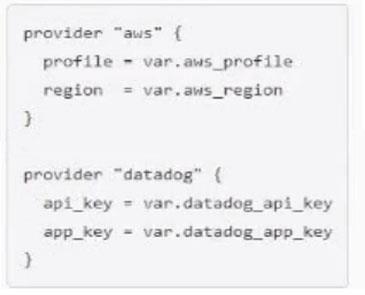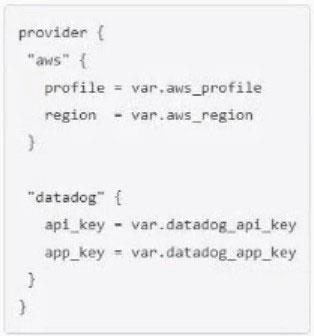Quiz
Quiz
Quiz
Quiz
Quiz
Quiz
Quiz
Quiz
HashiCorp Certified: Terraform Associate (003) Practice test unlocks all online simulator questions
Thank you for choosing the free version of the HashiCorp Certified: Terraform Associate (003) practice test! Further deepen your knowledge on HashiCorp Simulator; by unlocking the full version of our HashiCorp Certified: Terraform Associate (003) Simulator you will be able to take tests with over 8 constantly updated questions and easily pass your exam. 98% of people pass the exam in the first attempt after preparing with our 8 questions.
BUY NOWWhat to expect from our HashiCorp Certified: Terraform Associate (003) practice tests and how to prepare for any exam?
The HashiCorp Certified: Terraform Associate (003) Simulator Practice Tests are part of the HashiCorp Database and are the best way to prepare for any HashiCorp Certified: Terraform Associate (003) exam. The HashiCorp Certified: Terraform Associate (003) practice tests consist of 8 questions and are written by experts to help you and prepare you to pass the exam on the first attempt. The HashiCorp Certified: Terraform Associate (003) database includes questions from previous and other exams, which means you will be able to practice simulating past and future questions. Preparation with HashiCorp Certified: Terraform Associate (003) Simulator will also give you an idea of the time it will take to complete each section of the HashiCorp Certified: Terraform Associate (003) practice test . It is important to note that the HashiCorp Certified: Terraform Associate (003) Simulator does not replace the classic HashiCorp Certified: Terraform Associate (003) study guides; however, the Simulator provides valuable insights into what to expect and how much work needs to be done to prepare for the HashiCorp Certified: Terraform Associate (003) exam.
BUY NOWHashiCorp Certified: Terraform Associate (003) Practice test therefore represents an excellent tool to prepare for the actual exam together with our HashiCorp practice test . Our HashiCorp Certified: Terraform Associate (003) Simulator will help you assess your level of preparation and understand your strengths and weaknesses. Below you can read all the quizzes you will find in our HashiCorp Certified: Terraform Associate (003) Simulator and how our unique HashiCorp Certified: Terraform Associate (003) Database made up of real questions:
Info quiz:
- Quiz name:HashiCorp Certified: Terraform Associate (003)
- Total number of questions:8
- Number of questions for the test:50
- Pass score:80%
You can prepare for the HashiCorp Certified: Terraform Associate (003) exams with our mobile app. It is very easy to use and even works offline in case of network failure, with all the functions you need to study and practice with our HashiCorp Certified: Terraform Associate (003) Simulator.
Use our Mobile App, available for both Android and iOS devices, with our HashiCorp Certified: Terraform Associate (003) Simulator . You can use it anywhere and always remember that our mobile app is free and available on all stores.
Our Mobile App contains all HashiCorp Certified: Terraform Associate (003) practice tests which consist of 8 questions and also provide study material to pass the final HashiCorp Certified: Terraform Associate (003) exam with guaranteed success. Our HashiCorp Certified: Terraform Associate (003) database contain hundreds of questions and HashiCorp Tests related to HashiCorp Certified: Terraform Associate (003) Exam. This way you can practice anywhere you want, even offline without the internet.
BUY NOW When you run terraform validate, you get the following error:
When you run terraform validate, you get the following error:
 What must you do to successfully retrieve this value from your networking module?
A. Change the reference value to my-network,outputs,vmet_id
What must you do to successfully retrieve this value from your networking module?
A. Change the reference value to my-network,outputs,vmet_id B)
B)
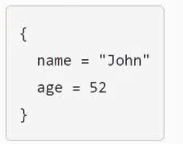 C)
C)
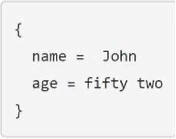 D)
D)
 A. Option A
B. Option B
C. Option C
D. Option D
Option B is correct.
Terraform can only manage resource dependencies if you set them explicitly with the depends_on
argument.
A. True
B. False
Option B is correct.
Terraform can manage resource dependencies implicitly or explicitly. Implicit dependencies are created
when a resource references another resource or data source in its arguments. Terraform can infer the
dependency from the reference and create or destroy the resources in the correct order. Explicit
dependencies are created when you use the depends_on argument to specify that a resource depends
on another resource or module. This is useful when Terraform cannot infer the dependency from the
configuration or when you need to create a dependency for some reason outside of Terraform’s scope.
References = : Create resource dependencies : Terraform Resource Dependencies Explained
How could you reference an attribute from the vsphere_datacenter data source for use with the
datacenter_id argument within the vsphere_folder resource in the following configuration?
A. Option A
B. Option B
C. Option C
D. Option D
Option B is correct.
Terraform can only manage resource dependencies if you set them explicitly with the depends_on
argument.
A. True
B. False
Option B is correct.
Terraform can manage resource dependencies implicitly or explicitly. Implicit dependencies are created
when a resource references another resource or data source in its arguments. Terraform can infer the
dependency from the reference and create or destroy the resources in the correct order. Explicit
dependencies are created when you use the depends_on argument to specify that a resource depends
on another resource or module. This is useful when Terraform cannot infer the dependency from the
configuration or when you need to create a dependency for some reason outside of Terraform’s scope.
References = : Create resource dependencies : Terraform Resource Dependencies Explained
How could you reference an attribute from the vsphere_datacenter data source for use with the
datacenter_id argument within the vsphere_folder resource in the following configuration?
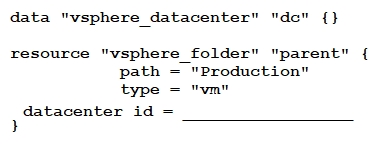 A. Data.vsphere_datacenter.DC.id
B. Vsphere_datacenter.dc.id
C. Data,dc,id
D. Data.vsphere_datacenter,dc
Option A is correct.
The correct way to reference an attribute from the vsphere_datacenter data source for use with the
datacenter_id argument within the vsphere_folder resource in the following configuration is
data.vsphere_datacenter.dc.id. This follows the syntax for accessing data source attributes, which is
data.TYPE.NAME.ATTRIBUTE. In this case, the data source type is vsphere_datacenter, the data
source name is dc, and the attribute we want to access is id. The other options are incorrect because
they either use the wrong syntax, the wrong punctuation, or the wrong case. References = [Data Source:
vsphere_datacenter], [Data Source: vsphere_folder], [Expressions: Data Source References]
Which of the following module source paths does not specify a remote module?
A. Source = “module/consul’’
B. Source = ‘’githhub.comicrop/example’’
C. Source =’’
A. Data.vsphere_datacenter.DC.id
B. Vsphere_datacenter.dc.id
C. Data,dc,id
D. Data.vsphere_datacenter,dc
Option A is correct.
The correct way to reference an attribute from the vsphere_datacenter data source for use with the
datacenter_id argument within the vsphere_folder resource in the following configuration is
data.vsphere_datacenter.dc.id. This follows the syntax for accessing data source attributes, which is
data.TYPE.NAME.ATTRIBUTE. In this case, the data source type is vsphere_datacenter, the data
source name is dc, and the attribute we want to access is id. The other options are incorrect because
they either use the wrong syntax, the wrong punctuation, or the wrong case. References = [Data Source:
vsphere_datacenter], [Data Source: vsphere_folder], [Expressions: Data Source References]
Which of the following module source paths does not specify a remote module?
A. Source = “module/consul’’
B. Source = ‘’githhub.comicrop/example’’
C. Source =’’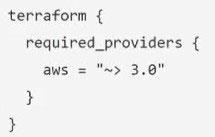
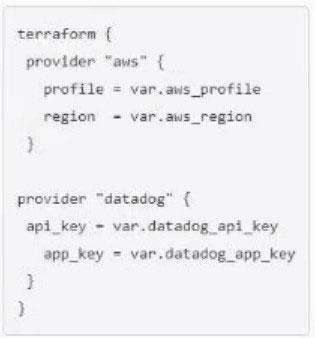 B)
B)
